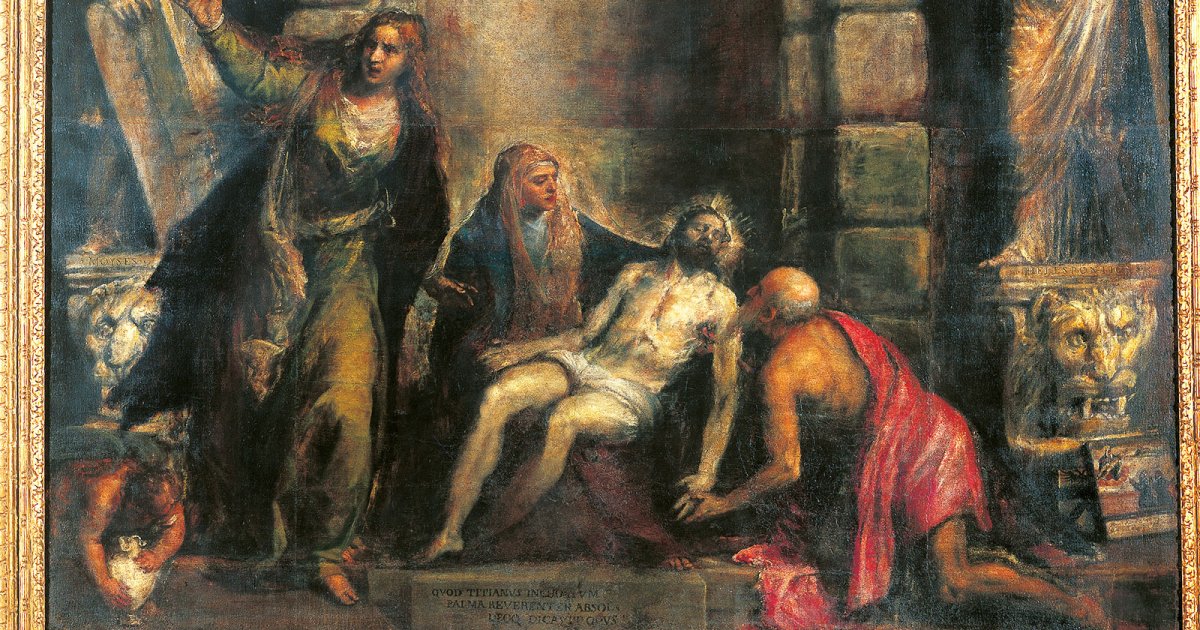ACCADEMIA GALLERY, Pieta' - Titian
 Language: English / USA
Language: English / USA
You are now standing before the last masterpiece of the patriarch of Venetian painting: Pietà, Titian's last work of art. It is a tragic painting, a canvas loaded with personal and autobiographical values. Titian was nearly ninety when he painted it, and it is a portrait of himself on his knees in the shoes of old Nicodemus, Jesus' disciple who helped bury his body after his crucifixion. This painting was destined to decorate the painter's tomb in the chapel of the Crucifix to the Friars, but Titian didn't manage to finish it.
Titian died on August 27, 1576 during a terrible plague, but probably not because of the disease: in fact, his body wasn't brought to the common grave, but to the Basilica of the Friars, where he was buried beneath a simple headstone, as you may already know if you've already had the chance to visit the church. So this Pietà was then completed by Jacopo Palma il Giovane and placed in the Church of the Angel; from there it was brought to the Accademia.
The tragic scene is framed by a massive stone arch covered with golden mosaics on top. Framing a scene with an architectural element in the background was an old trick of Venetian painting, and you'll find the same technique also adopted by Giovanni Bellini and Carpaccio while you walk through the Accademia Gallery. But here there is a dim, impure light that almost seems to corrode the shapes and colors. The two statues depicted at either side of the painting are Moses and Sibyl, but they seem faint, like ghosts.
The various figures are impressive: Mary Magdalene cries in anguish while Madonna seems petrified. Looking at the body of Christ, battered and tired, you can personally confirm that at the end of his long life, Titian sometimes painted without brushes, simply using his fingers soaked in color and streaked across the canvas.
FUN FACT: look carefully at the painting's lower right corner: you can see a votive leaning against the base of the statue of Sibyl, at the small coat of arms of the Vecellio family. With that same votive, faithfully reproduced here, the painter had actually asked the Madonna for salvation from the plague for himself and his son Orazio; unfortunately, the prayer remained unanswered and his son died just weeks after his father.



